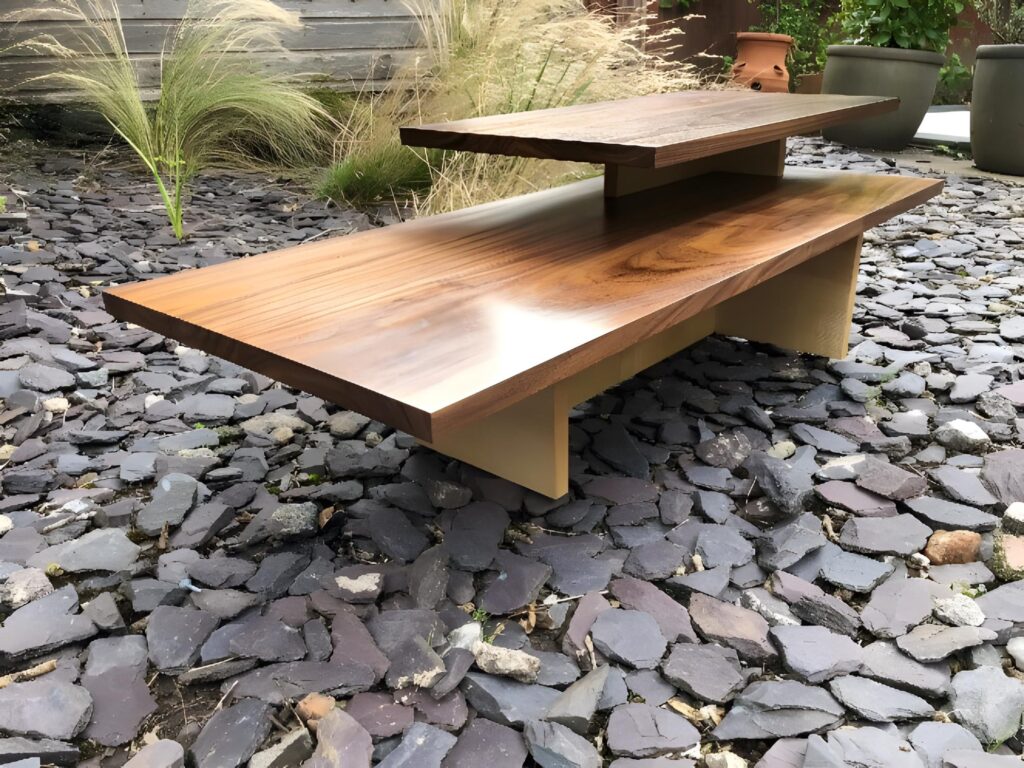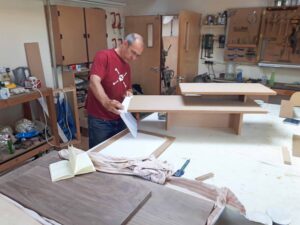
Bespoke one to one sessions give you the opportunity to work on a specifc project or a set of skills that you can determine.
Pictured here is the finished piece that a student worked on both in my workshop as well as at home. Geoff came to me wanting to create a coffee table and we worked on various aspects of his project. We discussed elements of style and proportion and used both full scale drawings and a maquette to help to picture the end piece.
We then discussed the most appropriate way to join the various components and practiced some of the techniques involved.
When working on larger projects such as Geoff’s table, ideally you would have access to your own workspace so as to make the process as cost efficient as possible. Before we start working together, I would find out what your existing skill level is and what you would like to achieve before giving you an idea of how many sessions you might need.
If you are interested in some one to one sessions then please get in touch.
Case study - Geoff's coffee table
Geoff, a hobbyist woodworker with some experience in crafting tables and boxes, contacted me for one-to-one sessions to enhance his confidence both as a designer and a maker. He aimed to improve the quality of his joints, achieve greater precision in his work, and develop his design skills. To meet these goals, we devised a five-day program tailored to both his technical and creative needs.
Geoff’s previous designs, largely inspired by George Nakashima, incorporated natural waney edges. We explored whether his design choices stemmed from uncertainty about achieving crisp finishes or were intentional stylistic preferences. I encouraged Geoff to develop his own design vocabulary and suggested looking beyond the realm of furniture for inspiration. His appreciation for architecture emerged as a key influence, leading us to discuss buildings he admired and analyse recurring design features. As homework, Geoff collected images and created sketches, while I emphasized the importance of brainstorming freely without overanalysing initial ideas.
On the craftsmanship side, we focused on improving the accuracy of his work. Starting with fundamental techniques, Geoff practiced hand-planing to ensure pieces were flat and square. We then refined his marking-out skills, using scalpels to create accurate lines on all sides of his work. These improvements paved the way for him to confidently create mortice and tenon joints, with additional Cherry wood pieces provided for further practice at home.
As Geoff’s confidence grew, we shifted focus to his design work, beginning with a low coffee table inspired by Frank Lloyd Wright’s Fallingwater house. Through rapid mock-ups with hot melt glue, we explored multiple iterations, dissected construction challenges, and analysed proportions. From there, we transitioned to one-to-one scale drawings and a full-scale MDF mock-up, allowing Geoff to refine his ideas further. While Geoff initially planned to dedicate more time to improving his craftsmanship, he became increasingly invested in the design aspect and opted for an additional session to finalize his coffee table design.
By the end of our sessions, Geoff had grown in both technical ability and design confidence. His distinctive style began to take shape, and he returned for further guidance on a console table—a companion piece to his coffee table. After refining its design together, Geoff completed the table independently, alongside a box, and submitted all three pieces to a local arts exhibition in Frodsham. His efforts paid off when he was awarded the runner-up prize, a testament to his hard work and perseverance.
Geoff’s journey highlights the importance of balancing technical mastery with creative exploration, as well as stepping out of one’s comfort zone to achieve growth. His progress, both in design and craftsmanship, demonstrates the value of persistence and a willingness to embrace new challenges.
Cheshire Furniture Courses — Fine Furniture Making & Woodworking Tuition Workshop in Ashley, Cheshire — near Manchester
Email Phone: 0161 928 5647 (workshop) 07969 115946
Offering premium woodworking courses and fine furniture making classes in Cheshire. Small class sizes and expert tuition from a master craftsman with 25 years of experience. Serving students from Manchester, Cheshire, and across the North West.
© 2025 Cheshire Furniture Courses. All rights reserved.




